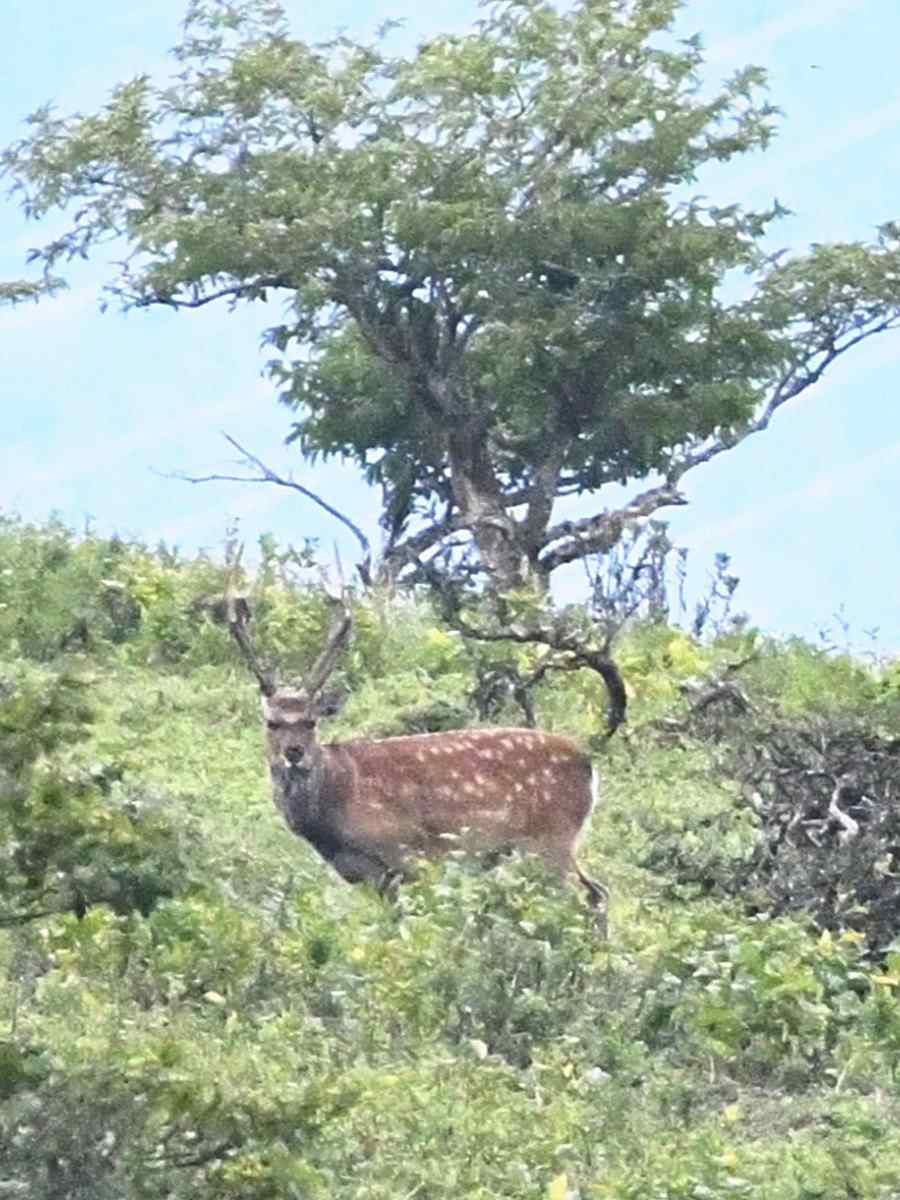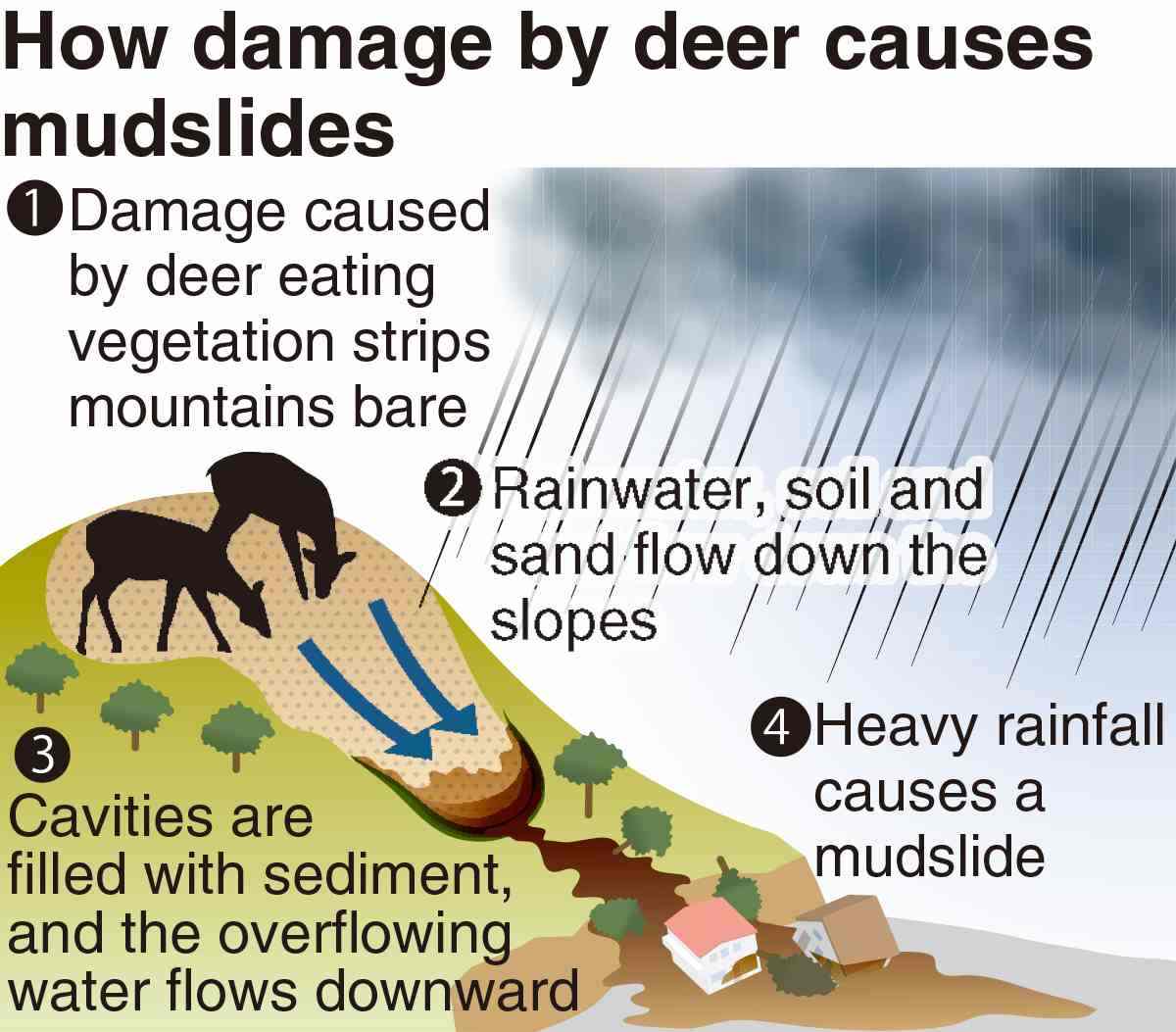Mudslide in Mt. Ibuki in Shiga, Gifu Likely Caused by Deer Eating Plants; Similar Cases Thought to Be Occurring in Japan

The Ibuki district of Maibara, Shiga Prefecture, is covered with rocks and soil on July 2.
6:00 JST, July 30, 2024
A mudslide that occurred in July on Mt. Ibuki, which straddles Shiga and Gifu prefectures, was likely caused by soil erosion from wild deer eating vegetation on the mountain, experts have said.
Deer causing serious damage to crops and vegetation has become a problem in various parts of the country. The July mudslide, which plowed into houses, is believed to be the first one caused by deer. Shiga Prefecture and other authorities are investigating the case in detail.
According to the Maibara city government, the mudslide occurred on the morning of July 1 near the foot of Mt. Ibuki and swept into the Ibuki district.
No one was killed or injured, but four houses were filled with earth and sand. At the time, 34 millimeters of rain had fallen on the area within one hour.

A deer is seen at Mt. Ibuki in August 2023.
Mt. Ibuki is known as a treasure trove of rare botanical species, and deer have been causing conspicuous damage to the plants and trees there since the 2010s.
The surrounding area is home to about 20,000 deer. Since 2020, erosion of the vegetation has progressed from midway up the mountain to the summit. The mountain’s water retention capacity has consequently decreased, leading to landslides during heavy rains.
According to Yoshiharu Ishikawa, a professor emeritus at the Tokyo University of Agriculture and Technology who has been conducting regular surveys of the mountain, the dirt and rainwater that had run off stayed in cavities midway up the mountain. However, during a field survey on July 7, he observed traces of overflowing water that had flowed down to the base of the mountain after the cavities were filled with sediment.
He believes the water pooled in the valley near the foot of the mountain then overflowed with the sediment, causing a mudslide.

“Damage to crops by deer is known to harm rare plants, but we want people to know that deer also carry a risk of causing landslides,” Ishikawa said.
The prefectural and city governments will also conduct a detailed study of the relationship between the mudslide and the damage caused by the deer.
Mayor Michio Hirao said, “We have to reflect on whether we had a sense of crisis in dealing with the damage caused by the deer.”
Expanding deer habitat
According to the Environment Ministry, deer habitats have expanded 2.7 times in about 40 years, and soil erosion believed to be caused by deer has been reported in many areas.
Deer were first observed on Mt. Hayachine in Iwate Prefecture around 2010. Soil is now exposed on the mountain surface from its base to halfway up. When it rains, sediment flows into the river downstream. Mahoro Suzuki, an official at a prefectural museum, expressed concern, saying, “10 years from now, it might look like Mt. Ibuki.”
In 2004, a large amount of sediment flowed from exposed parts of mountains in Okutama, Tokyo, and buried a water gate at a water supply facility.
In 2009, a landslide occurred in the Saorigahara district in Kami, Kochi Prefecture, where there is an old-growth forest. The landslide was caused by progressive vegetation erosion.
Despite these incidents, no nationwide survey has been conducted to determine the number of similar cases.
“We are aware of the risk and will take countermeasures through [deer] population control and other means,” said an official of the Forestry Agency.




